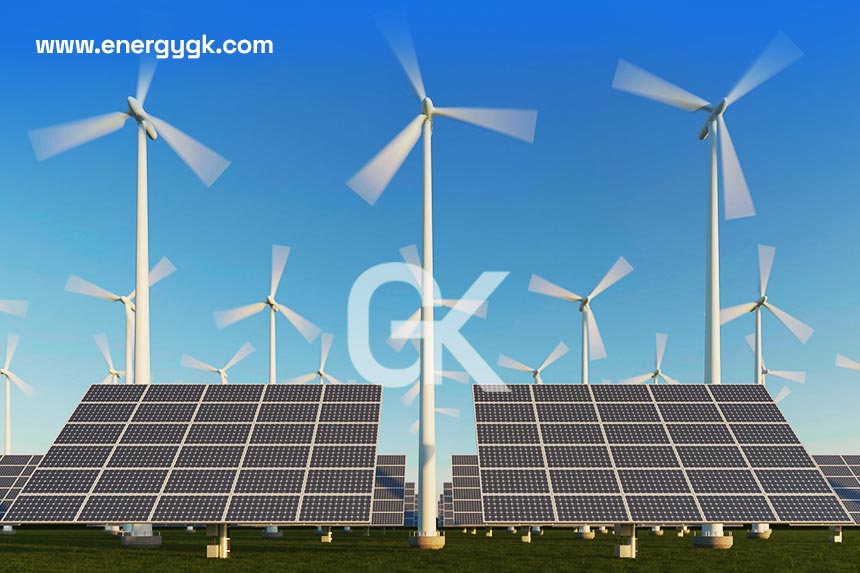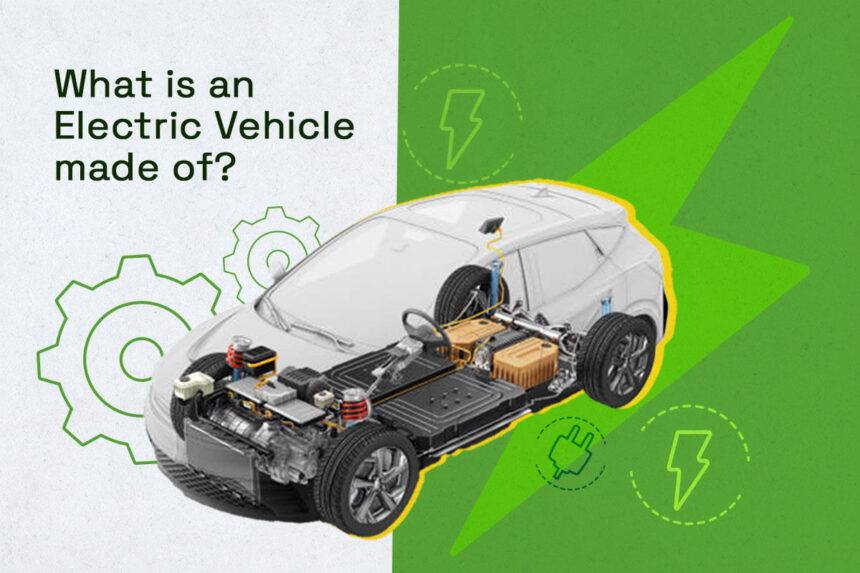Renewable energy has become a hot topic in recent years as the world strives to reduce its dependency on fossil fuels and combat climate change. With concerns about pollution, global warming, and energy security, the need for sustainable and clean energy sources has never been more urgent. In this article, we will explore the various forms of renewable energy and shed light on their unique characteristics, benefits, and drawbacks.
Introduction
As traditional energy sources deplete and their environmental impact becomes increasingly evident, renewable energy offers a promising alternative. Unlike fossil fuels, which are finite and release harmful emissions when burned, renewable energy is derived from sources that are naturally replenished and emit little to no greenhouse gases during operation.
The Importance of Renewable Energy
Renewable energy plays a crucial role in addressing several global challenges. Firstly, it helps mitigate climate change by reducing carbon dioxide emissions and other greenhouse gases. Secondly, it enhances energy security by diversifying the energy mix and reducing reliance on foreign oil. Lastly, it creates new economic opportunities, fosters innovation, and promotes sustainable development.
Solar Energy
What is Solar Energy?
Solar energy is the conversion of sunlight into electricity or heat. It harnesses the power of the sun through the use of photovoltaic cells or solar thermal collectors. Solar energy is abundant, clean, and renewable, making it one of the most popular forms of renewable energy worldwide.
How Does Solar Energy Work?
When sunlight reaches the photovoltaic cells in solar panels, it stimulates the release of electrons, generating an electric current. This current can be used directly or stored in batteries for later use. In solar thermal systems, sunlight is used to heat water or other fluids, which can then be used for various purposes.
Advantages of Solar Energy
Solar energy offers numerous advantages. It is a clean and sustainable source of power that produces no greenhouse gas emissions during operation. It can be deployed on various scales, from small residential systems to large solar farms. Solar energy also reduces electricity bills and provides energy independence to individuals and communities.
Disadvantages of Solar Energy
Despite its many benefits, solar energy has some limitations. It is dependent on sunlight availability and requires ample space for installation, which can be challenging in densely populated areas. Additionally, solar panels can be expensive to manufacture and install, although costs have been decreasing steadily in recent years.
Wind Energy
What is Wind Energy?
Wind energy is the conversion of wind power into useful forms of energy, such as electricity. It utilizes wind turbines to capture the kinetic energy of moving air and convert it into electrical energy. Wind energy is a rapidly growing renewable energy source with significant potential for meeting global electricity demand.
How Does Wind Energy Work?
Wind turbines, consisting of large blades and a tower, are strategically placed in areas with high wind speeds. As the wind blows, it causes the turbine blades to rotate, which activates a generator and produces electricity. This electricity can be used to power homes, businesses, and even entire cities.
Advantages of Wind Energy
Wind energy has several advantages. It is a clean and abundant source of power that produces no greenhouse gas emissions or air pollutants during operation. Wind turbines can be installed both onshore and offshore, providing flexibility in deployment. Wind energy also creates job opportunities and supports local economies.
Disadvantages of Wind Energy
While wind energy offers many benefits, it also has a few drawbacks. Wind turbines can be visually intrusive and generate noise, which may affect nearby communities. They also require suitable wind conditions to generate electricity efficiently, limiting their viability in certain locations. Additionally, wind energy faces intermittency challenges when the wind speed is low or too high.
Hydroelectric Power
What is Hydroelectric Power?
Hydroelectric power is generated by harnessing the energy of flowing or falling water. It is one of the oldest and most widely used forms of renewable energy. Hydroelectric power plants use dams or waterfalls to capture the energy of water and convert it into electricity.
How Does Hydroelectric Power Work?
In a hydroelectric power plant, water is stored behind a dam, creating a reservoir. When released, the water flows through turbines, which spin a generator and produce electricity. The amount of electricity generated depends on the volume and height of the water flow.
Advantages of Hydroelectric Power
Hydroelectric power offers several advantages. It is a clean and reliable source of energy that produces no air pollution or greenhouse gas emissions during operation. Hydroelectric power plants can provide a stable and constant supply of electricity, contributing to grid stability. Additionally, the reservoirs created by dams can serve multiple purposes, such as irrigation and water supply.
Disadvantages of Hydroelectric Power
Despite its benefits, hydroelectric power has certain drawbacks. The construction of dams and reservoirs can have significant environmental and social impacts, including habitat alteration and displacement of communities. Dams may also disrupt natural river flow patterns and affect aquatic ecosystems. Furthermore, suitable locations for large-scale hydroelectric projects are limited.
Geothermal Energy
What is Geothermal Energy?
Geothermal energy is derived from the heat stored within the Earth’s interior. It taps into the natural heat of the Earth to generate electricity or provide heating and cooling for residential and commercial buildings.
How Does Geothermal Energy Work?
Geothermal power plants utilize underground heat sources, such as geothermal reservoirs or hot springs. Wells are drilled into these sources, and the hot water or steam is brought to the surface. The steam is then used to drive a turbine, which generates electricity. Geothermal heat pumps, on the other hand, use the stable temperature of the Earth to heat or cool buildings.
Advantages of Geothermal Energy
Geothermal energy has several advantages. It is a clean and reliable source of power that emits minimal greenhouse gases. Geothermal power plants have a small physical footprint and can operate continuously, providing baseload power. Geothermal heat pumps offer efficient heating and cooling solutions with lower energy consumption.
Disadvantages of Geothermal Energy
Despite its benefits, geothermal energy has limitations. It is geographically dependent and can only be harnessed in areas with accessible geothermal reservoirs. The exploration and drilling processes can be expensive and technically challenging. Additionally, geothermal power plants may release small amounts of hydrogen sulfide and other gases, which require appropriate mitigation
measures.
Biomass Energy
What is Biomass Energy?
Biomass energy is derived from organic matter, such as plants, crop residues, and animal waste. It involves the conversion of biomass into usable forms of energy, including heat, electricity, and biofuels.
How Does Biomass Energy Work?
Biomass can be burned directly to produce heat or used in boilers to generate steam, which then drives a turbine to produce electricity. Biomass can also undergo biochemical processes, such as fermentation, to produce biofuels like ethanol and biodiesel.
Advantages of Biomass Energy
Biomass energy offers several advantages. It is a renewable and readily available resource, as organic waste and plant materials are abundant. Biomass energy systems can help reduce landfill waste and contribute to the circular economy. Additionally, biomass can serve as a reliable source of heat and electricity, especially in rural areas.
Disadvantages of Biomass Energy
Despite its benefits, biomass energy has some drawbacks. The combustion of biomass can release pollutants and greenhouse gases if not properly controlled. The production of biofuels from crops may compete with food production and require careful management to avoid negative environmental impacts. Additionally, transportation and storage of biomass can be logistically challenging.
Conclusion
Renewable energy sources, such as solar, wind, hydroelectric, geothermal, and biomass, offer a diverse range of options to transition towards a sustainable future. Each form of renewable energy has its unique characteristics, benefits, and limitations. By harnessing these sources, we can reduce our dependence on fossil fuels, mitigate climate change, and create a cleaner and more resilient energy system.
Frequently Asked Questions
- Is renewable energy more expensive than fossil fuels?
- Renewable energy costs have been declining rapidly in recent years and are becoming increasingly competitive with fossil fuels. Additionally, the long-term benefits of renewable energy, such as reduced environmental impact and energy security, outweigh any initial cost differences.
- Can renewable energy alone meet the world’s energy demand?
- While renewable energy has the potential to meet a significant portion of the world’s energy demand, a diversified energy mix that includes a combination of renewable sources, energy storage, and energy efficiency measures is essential for a reliable and sustainable energy system.
- Are there any disadvantages to switching to renewable energy?
- While renewable energy has numerous advantages, it also faces challenges. These include intermittency issues for certain sources like solar and wind, the need for infrastructure investments, and the requirement for supportive policies and regulations to accelerate the transition.
- What role can individuals play in promoting renewable energy?
- Individuals can support renewable energy by adopting energy-efficient practices, investing in renewable energy technologies for their homes, advocating for renewable energy policies, and participating in community initiatives for clean energy.
- How can renewable energy contribute to job creation?
- The renewable energy sector has the potential to create a significant number of jobs across various areas, including manufacturing, installation, operation, and maintenance. Investments in renewable energy can stimulate economic growth and foster employment opportunities.
In conclusion, understanding the diverse forms of renewable energy is crucial for achieving a sustainable and cleaner future. By embracing solar, wind, hydroelectric, geothermal, and biomass energy, we can reduce carbon emissions, enhance energy security, and create a more resilient planet for generations to come. Let’s harness the power of renewable energy and pave the way for a greener tomorrow.







